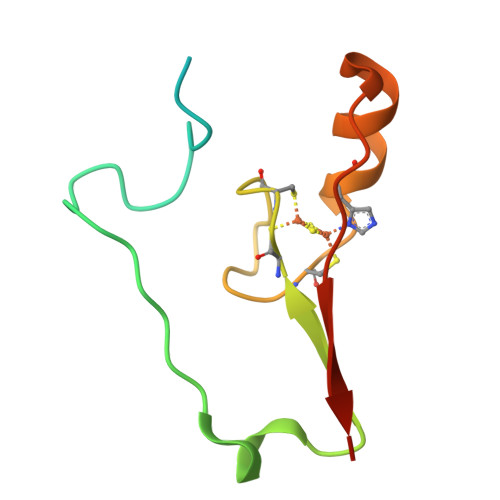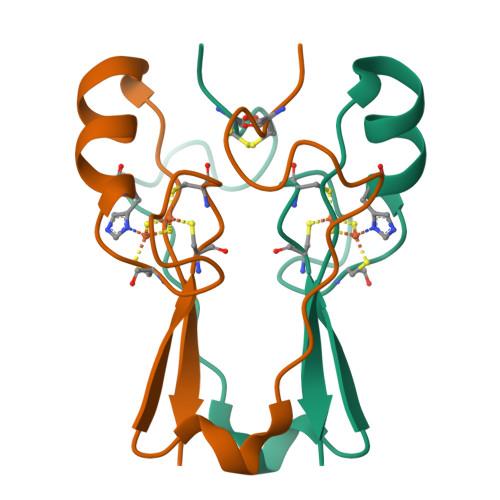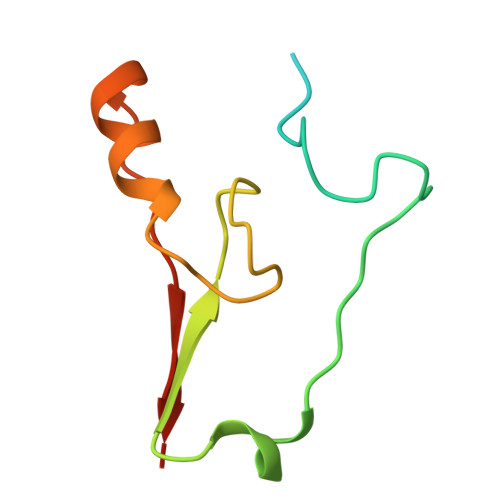Structure and biological evaluation of Caenorhabditis elegans CISD-1/mitoNEET, a KLP-17 tail domain homologue, supports attenuation of paraquat-induced oxidative stress through a p38 MAPK-mediated antioxidant defense response.
Boos, J.R., Jandrain, H.N., Hagiuda, E., Taguchi, A.T., Hasegawa, K., Fedun, B.L., Taylor, S.J., Elad, S.M., Faber, S.E., Kumasaka, T., Iwasaki, T., Geldenhuys, W.J.(2022) Adv Redox Res 6
- PubMed: 36533211
- DOI: https://doi.org/10.1016/j.arres.2022.100048
- Primary Citation of Related Structures:
7YVZ - PubMed Abstract:
CISD-1/mitoNEET is an evolutionarily conserved outer mitochondrial membrane [2Fe-2S] protein that regulates mitochondrial function and morphology. The [2Fe-2S] clusters are redox reactive and shown to mediate oxidative stress in vitro and in vivo . However, there is limited research studying CISD-1/mitoNEET mediation of oxidative stress in response to environmental stressors. In this study, we have determined the X-ray crystal structure of Caenorhabditis elegans CISD-1/mitoNEET homologue and evaluated the mechanisms of oxidative stress resistance to the pro-oxidant paraquat in age-synchronized populations by generating C. elegans gain and loss of function CISD-1 models. The structure of the C. elegans CISD-1/mitoNEET soluble domain refined at 1.70-Å resolution uniquely shows a reversible disulfide linkage at the homo-dimeric interface and also represents the N-terminal tail domain for dimerization of the cognate kinesin motor protein KLP-17 involved in chromosome segregation dynamics and germline development of the nematode. Moreover, overexpression of CISD-1/mitoNEET in C. elegans has revealed beneficial effects on oxidative stress resistance against paraquat-induced reactive oxygen species generation, corroborated by increased activation of the p38 mitogen-activated protein kinase (MAPK) signaling cascade.
Organizational Affiliation:
Department of Neuroscience, School of Medicine, West Virginia University, Morgantown, WV, USA.

















